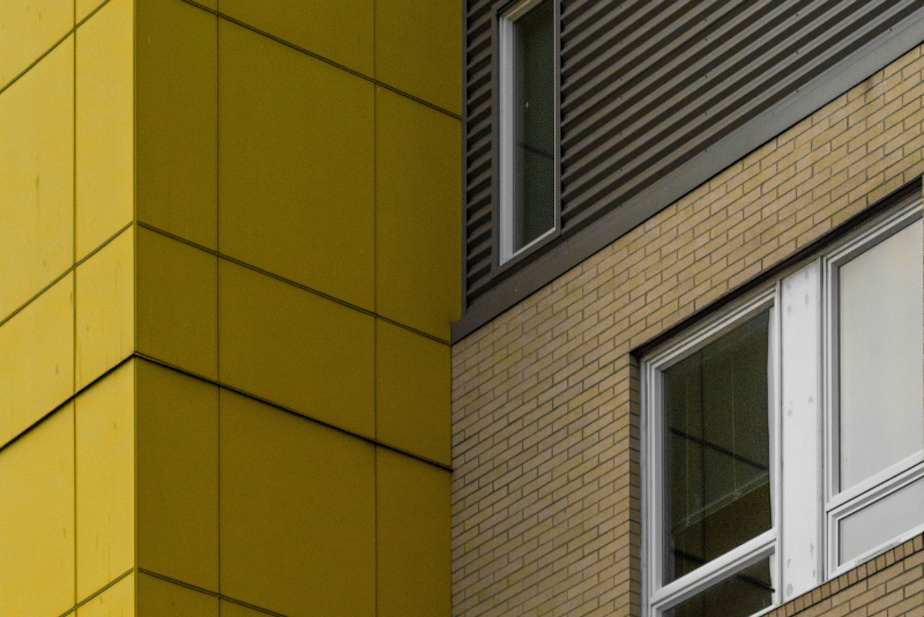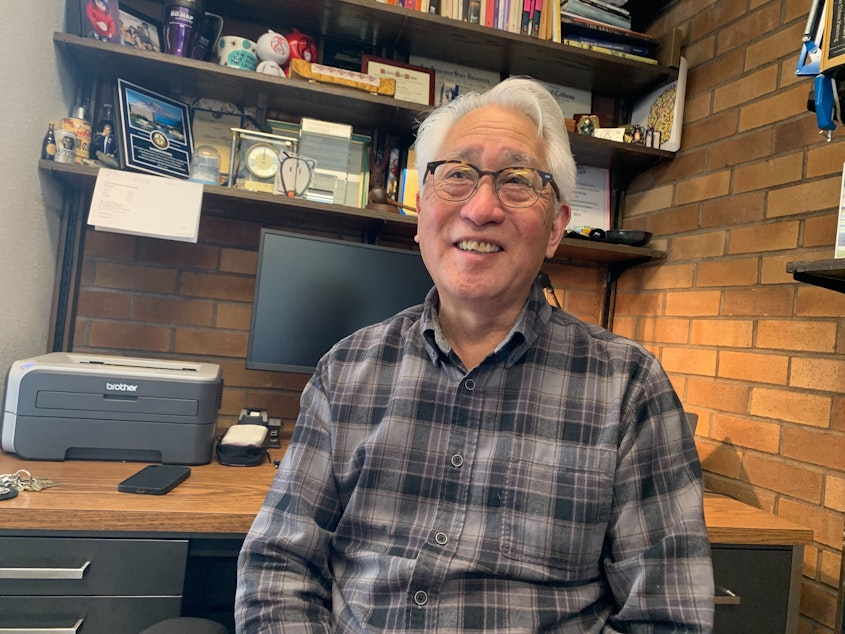The look, the feel, of Seattle: Today So Far

Is there hope for the future of new housing in Seattle? (I think so)
This post originally appeared in KUOW's Today So Far newsletter for June 23, 2022.
We better stretch first for today's newsletter. Take a deep breath. I know it's gonna ruffle some feathers. Because we're gonna talk about one of the most tense issues around Seattle — housing!
Architecture and development are a lot like art. Some people look a building and are pleased, even impressed. Then you have people like me, who look at a lot of Seattle's new buildings and say, "I don't get it. It actually hurts to look at. And it costs how much?! For that?!"
Take my old neighborhood, Seattle's Roosevelt area. New light rail station — awesome. Bars, coffee shops, burritos, burgers — all awesome. New construction — meh. I figure that at some point, someone had to look at nearby Roosevelt High School, and the gorgeous neighboring homes, and say, "That building is so beautiful, majestic, and historic ... these homes are so quaint and lovely ... there's a nice vibe going on ... let's build the opposite of that."
This is just the opinion of one newsletter writer with absolutely no architecture experience. I've made no secret of my perspective on modern Seattle development, which I feel is inspired by a disheleved pile of shoe boxes, decorated with rejected paint from a bargain bin. But there are also plenty of people who say that Seattle desperately needs that housing, no matter what it looks like. And they're right.
That's why I have hope after hearing about a new crop of architecture students in Seattle with fresh ideas. They recently presented a few novel plans and designs at the University of Washington, to a crowd of local decision makers, as Joshua McNichols reports.
Take student Azita Footohi, who explained their idea to KUOW — replace some of Seattle's single-family homes with multi-housing units that don't stick out. Footohi's design looks like a regular house.
“The idea of doing that was to blend more into the neighborhood and...presumably the response from the neighbors would be a little bit better,” Footohi told KUOW.
Student Lara Tedrow had a similar idea. Her design has eight units in a building that looks like any old house next door. Other students balanced compromises, such as giving up backyards. Others considered the city's aging population and aimed to avoid displacing them. Add that up and new Seattle could look a lot like the old Seattle we already love.
These ideas come at a time when Seattle is updating its comprehensive plan, which has a lot to do with the city's growth. It also has a lot to do with Seattle's affordability. Because even if we can get the housing we need in town, will it even be affordable?
As a reporter, I have always struggled to get readers into topics like zoning codes and comprehensive plans. But it's this information that is going to dramatically influence your daily life in the years ahead. Also, I will tell you that people will get in heated fights over these details. That's the stage as Seattle attempts to find "middle housing."
Here's the thing: A lot of the housing mentioned above is not legal to build in Seattle. The city is slated to reach a population of 1 million in less than 15 years. At least 152,000 more homes will be needed to cover all these people. Which goes back to the premise of today's newsletter — how can we get more housing in Seattle that people will be cool with?
I highly recommend you listen to KUOW's Joshua McNichols as he provides a few insights on a recent episode of Soundside. At the very least, it's a great primer for the local debates ahead.
RELATED: New Northgate supportive housing aims to offer next step for 'shelter'
AS SEEN ON KUOW

Author and UW creative writing professor Shawn Wong is helping military veterans "tell their story" and break their silence. Along with actor Tom Skerritt, he helps lead a writing workshop based near JBLM. (Bill Radke / KUOW)
DID YOU KNOW?
Do you smell a rat? In Seattle, you probably do. We have a lot of them around, and Orkin has the data to prove it.
The pest control company added up all the rodent services it provided in the United States' largest cities to determine the most rat-filled towns. Seattle comes in at no. 11, which is pretty high up on the list. The Emerald City actually rose one place in the annual rankings, according to the most recent assessment. Orkin actually thinks that city rodents have good times ahead. More people are returning to cities in the wake of pandemic peaks, and we bring a lot of food with us, which partially ends up being their food. It's a good reminder to keep your home squeaky clean.
And because you're curious, Chicago is the rattiest city in the USA. If you don't like rats, then Tampa is your town.
ALSO ON OUR MINDS

Jan. 6 hearings use TV tricks to great effect even as critics call them show biz
Skeptics call the congressional hearings on the January 6th siege of the U.S. Capitol show business. On Fox News, critics call them "show trials." Yet the House select committee investigating the attack is achieving something rare on Capitol Hill: Hearings that are surprisingly tangible, understandable, and substantive instead of the typical congressional ping-pong match of clashes, arguments and even more arguments about whose turn it is to argue.

